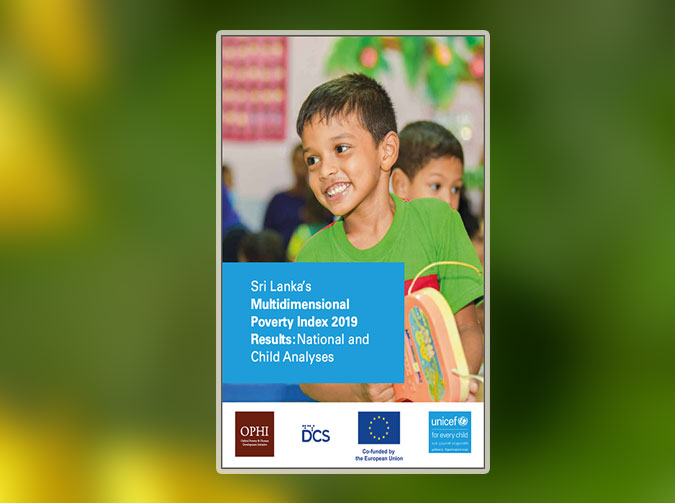News
One third of SL children undernourished: UNICEF-OPHI study

A startling 42.2 per cent of the 0-4-year-old Lankan children are multidimensionally poor, a study conducted collectively by the Department of Census and Statistics (DCS), the United Nations Children’s Fund (UNICEF) Sri Lanka and the Oxford Poverty & Human Development Initiative (OPHI) at the University of Oxford revealed.Based on data from the Household Income and Expenditure Survey 2019, the study’s report says that an alarming one third of children are undernourished.
“It is disheartening that more than 4 in 10 children under the age of 5 years are multidimensionally poor, that is, they are being deprived of several factors that are key to their wellbeing, specifically nutrition, care and stimulation. Multidimensional child poverty is much higher than the national average based on the national MPI, with 1 in 6 people living in poverty. This finding reproduces a global pattern, namely that children often suffer disproportionately from poverty,” says the executive summary of the report titled ‘Sri Lanka’s Multidimensional Poverty Index 2019 Results: National and Child Analyses.’
This report presents the official national Multidimensional Poverty Index (national MPI) and child Multidimensional Poverty Index (child MPI) complementing the monetary poverty measures published by the Department of Census and Statistics (DCS) in Sri Lanka. These indexes cover the different dimensions of nonmonetary deprivations experienced by poor people and children at the same time. The report provides a comprehensive picture of poverty for evidence-based policy decisions to achieve the Sustainable Development Goal 1, Target 1.2, Indicator 1.2.2 “End poverty in all its forms everywhere” as per the national definition with the concept of the “no one left behind” principle.
The report sheds light on the multiple deprivations experienced by the poor in Sri Lanka- one out of every six people is multidimensionally poor by the national MPI (16%) and their deprivations vary greatly by district and age. It also finds that those living in multidimensional poverty are not necessarily poor in monetary terms. Furthermore, by the linked child MPI, 42.2% of children 0-14 years old are multidimensionally poor and an alarming one third of children are undernourished. Sri Lanka’s child MPI is pioneering in being the first official measure of child poverty that links directly and consistently with the national MPI: they both include the same indicators, while a fourth dimension covering undernutrition and early childhood development is added to the linked child MPI.
The DCS has compiled national MPI and child MPI as official statistics, for the first time in history for the year 2019 using the data from Household Income and Expenditure Survey 2019 (HIES 2019). This report is an outcome of the collaborative exercise done by the DCS, the OPHI and the UNICEF Country Office in Sri Lanka.
Sri Lanka’s national MPI is the first MPI in the world to directly and fully link the individual measure of child poverty with national poverty, also known as the ‘drawer approach’. The national MPI in Sri Lanka has 10 indicators grouped into three dimensions: Education, Health and Standard of Living. The individual and pioneering child MPI for children aged 0–4 includes the same indicators as the national MPI and adds a fourth dimension to cover undernutrition and early childhood development.
The national MPI is 0.067 for Sri Lanka in 2019. It indicates that poor people in Sri Lanka experience only 6.7 per cent of the deprivation that would be experienced if all Sri Lankans were deprived in all indicators. The multidimensional poverty headcount ratio is 16 per cent at national level and the poverty rate of urban, rural and estate sectors are 4.4 per cent, 16.6 per cent and 51.3 per cent respectively. Monetary poverty in Sri Lanka is 14.3 per cent in 2019.